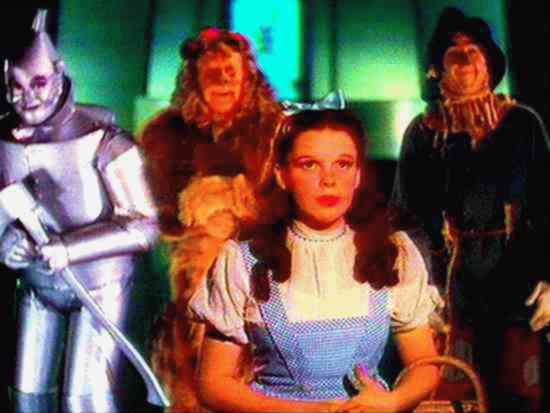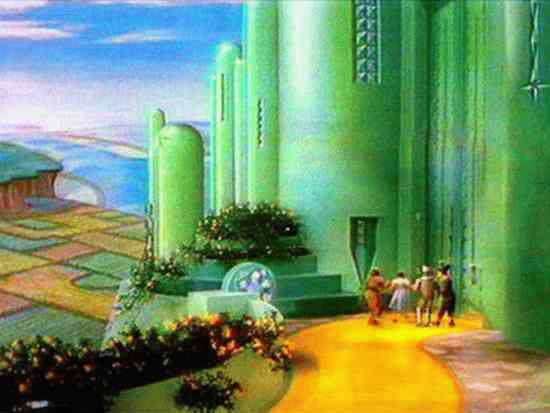 |
 |
|||
       |
|
 |
 |
|||
       |
|
Characters and their real life counterparts |
|
 |
|
|
|
 The Emerald City, or Washington D.C. |
|
|
|
| The Tin Woodman receives a heart | |
The Wonderful Wizard
of Oz a a monetary allegory |
||
When Frank Baum writes ... |
... he actually thinks. |
|
The party follows the yellow brick road up to the Emerald City |
They follow the gold standard up to Washington DC | |
| The tin woodman is given "a new ax with a handle made of gold and a blade polished so that it glistens like burnished silver and a silver oilcan inlaid with gold and precious stones to oil himself " | The bimetallic standard will ensure the industrial worker that he won't be unemployed again | |
| In the Emerald Palace they enter 7 passages and climb 3 flights of stairs | In the White House they see 7 and 3 : 73 | |
| Dorothy can go back to Kansas by "kicking the heels of her silver shoes together three times". | The power to solve her problems (by adding silver to the money stock) was there all the time. | |
![]() Return to Monetary History
Return to Monetary History
![]() Return to François Micheloud's Homepage
Return to François Micheloud's Homepage